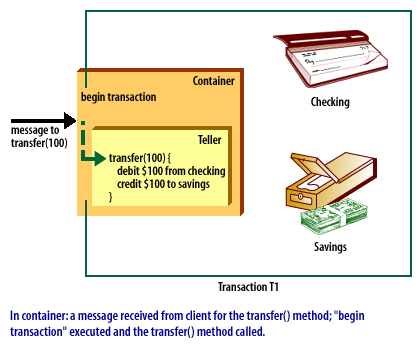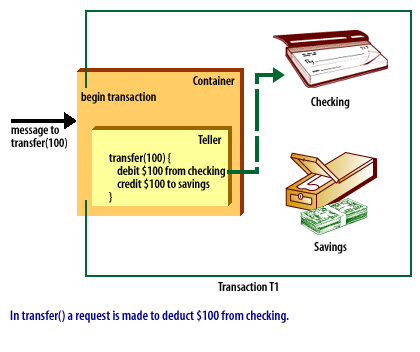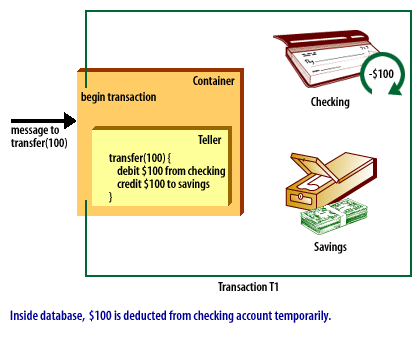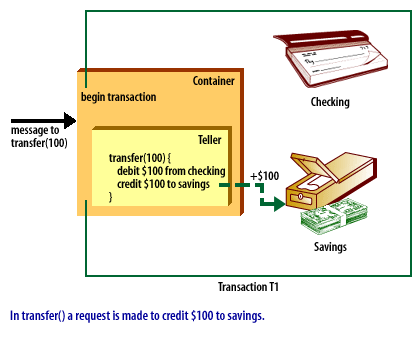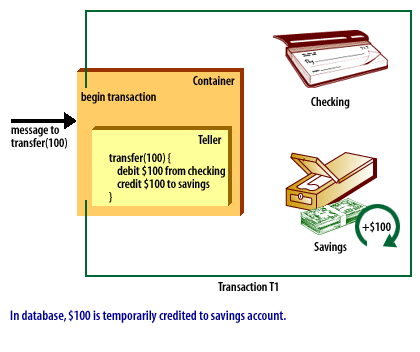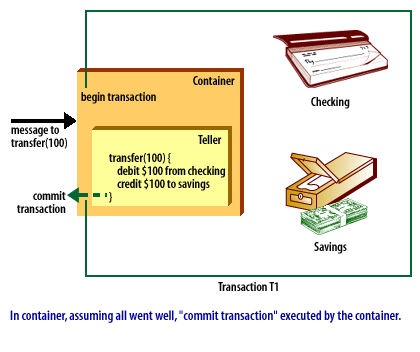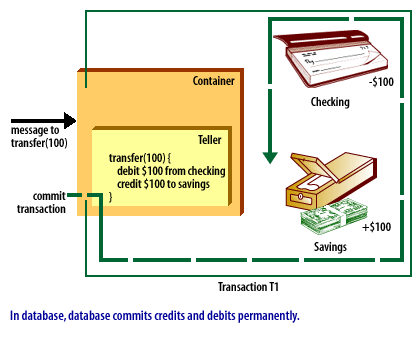Steps involved in J2EE Transaction
To emulate a business transaction, a program may need to perform several steps.
A financial program, for example, might transfer funds from a checking account to a savings account, by performing the steps listed in the following pseudocode:
This guarantee is described as atomicity. A transaction can end in two ways: with
Even if a transaction fails, data integrity would be intact because the transaction accounts still balance. This aspect of transactional behavior is known as transactional consistency.
The transaction service also provides isolation, which means that phases in a transaction cannot be observed by other applications and threads, until the transaction is committed or rolled back. Once a transaction is committed, the committed transaction can be safely observed by applications and threads.
- begin transaction
- debit checking account
- credit savings account
- update history log
- commit transaction
This guarantee is described as atomicity. A transaction can end in two ways: with
- a commit or
- a rollback.
Even if a transaction fails, data integrity would be intact because the transaction accounts still balance. This aspect of transactional behavior is known as transactional consistency.
The transaction service also provides isolation, which means that phases in a transaction cannot be observed by other applications and threads, until the transaction is committed or rolled back. Once a transaction is committed, the committed transaction can be safely observed by applications and threads.
Developing Middleware in Java EE 8
J2EE Container and Methods
